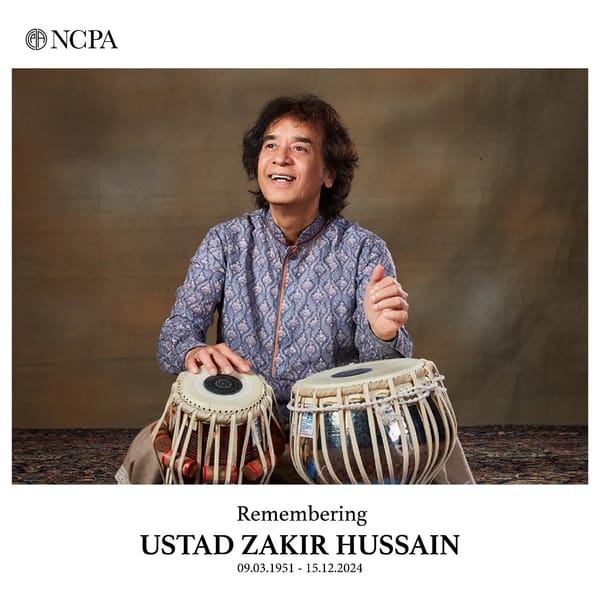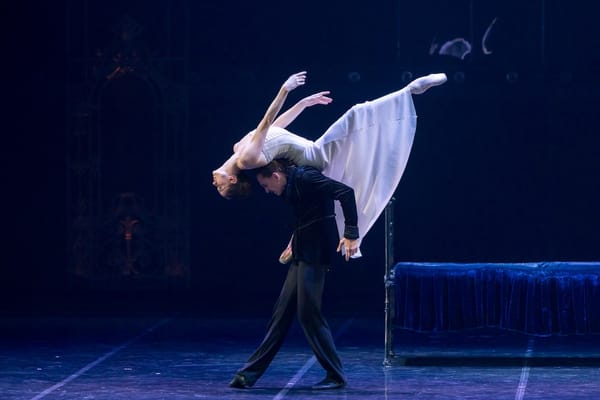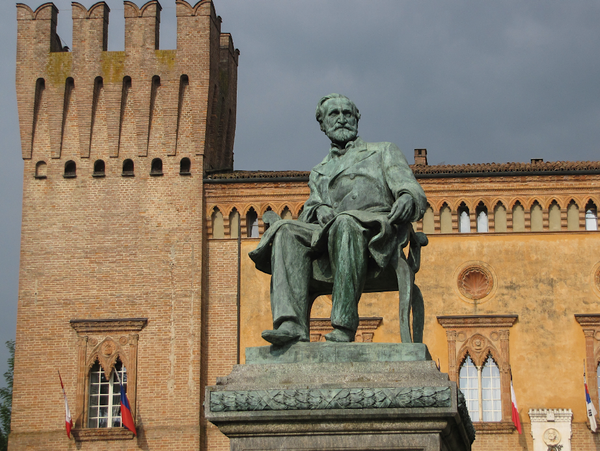How to Build a Classical Music Curriculum
A clear and practical guide to designing a thoughtful classical music curriculum that balances technique, repertoire, musicianship and creativity, helping educators build structured pathways that inspire confident, curious and well rounded young musicians.

Designing a classical music curriculum is a rewarding task that brings clarity, purpose and structure to a student’s artistic journey. Whether the curriculum is intended for a school, a conservatory, a private studio or an outreach programme, the goal remains the same: to guide learners through a coherent musical path that gradually builds technique, literacy, creativity and cultural understanding. Classical music education is not simply about reproducing the repertoire. It is about nurturing musical thinking, offering historical and stylistic insight and developing the skills required to engage deeply with one of the world’s richest artistic traditions.
This article outlines the key principles and practical steps needed to build a well shaped classical music curriculum. It combines pedagogical structure with flexibility so that educators can adapt it to their own students, institutions and artistic goals.
1. Define the Purpose and Philosophy
A robust curriculum begins with a clear purpose. Before choosing repertoire, assessments or teaching methods, educators should articulate what the curriculum aims to achieve. Some programmes prioritise technical mastery, others emphasise creativity, while certain institutions may focus on ensemble participation or community engagement. Asking the following questions provides a strong foundation.
What kind of musician do we want our students to become?
What musical values do we want to instil?
How do we balance tradition with innovation?
A classical music curriculum must also carry a coherent philosophy. For example, a programme may emphasise the connection between analysis and performance, or champion a broad repertoire that includes underrepresented composers. When these guiding ideas are clear, the curriculum gains direction and integrity.
2. Identify the Learning Stages
A well organised curriculum divides learning into progressive stages. Although each institution may tailor the levels differently, the following structure works well across most classical music settings.
Beginner Stage: Students develop fundamental skills such as posture, breath control, basic notation, rhythmic accuracy and simple repertoire. Lessons focus on cultivating a healthy technique while nurturing curiosity and musical enjoyment.
Intermediate Stage: Students expand their technical vocabulary, explore more complex repertoire and apply theoretical knowledge in performance. This stage also introduces a broader historical and stylistic range so that learners recognise the features of different musical periods.
Advanced Stage: Students work towards artistic independence. They perform sophisticated repertoire, develop interpretative insight, refine technical nuances and explore extended musicianship skills such as chamber music, composition or conducting.
Clear levels provide measurable goals. They also give students a sense of progression and achievement, which is crucial for motivation.
3. Build a Balanced Repertoire Framework
Repertoire is the heart of a classical music curriculum. Choosing the right selection reinforces technique, fosters stylistic understanding and inspires artistic imagination.
A strong repertoire framework should include:
Core Works: These are foundational pieces that represent the major stylistic periods: Baroque, Classical, Romantic and twentieth century. They allow students to explore phrasing, articulation, harmonic language and form.
Technical Studies: Études, exercises and scales are central to building facility and control. They should be carefully matched to the repertoire so that technique and musicianship evolve together.
Contemporary and Global Works: Including living composers and diverse musical traditions helps students view classical music as a living art. It also broadens their cultural awareness and encourages open minded listening.
Choice Pieces: Offering a few optional works at each level allows students to explore personal interests. This builds ownership of the learning process and strengthens engagement.
The chosen repertoire should also reflect a thoughtful progression. Earlier works might emphasise simple textures and predictable forms, while later pieces introduce contrapuntal complexity, extended techniques or interpretative challenges.
4. Integrate Musicianship and Theory
A classical music curriculum is incomplete if it focuses only on performance. Musicianship skills such as aural training, theory, sight reading, harmony and analysis enable students to understand the language of music more deeply. These areas should not exist as isolated subjects. Instead, they should be woven into weekly lessons and supported with structured coursework.
For example:
- When teaching a Mozart sonata, students can analyse the harmonic progression and phrase structure.
- During string lessons, teachers can connect bowing patterns to rhythmic concepts learned in theory class.
- In choral settings, sight singing exercises can relate directly to upcoming repertoire.
Integrating these elements allows students to understand what they play, not just how to play it.
5. Emphasise Ensemble Experience
Classical music is inherently collaborative. A curriculum that includes ensemble work builds social interaction, discipline, listening skills and artistic synergy. Opportunities might include:
- Orchestra or band
- Choir or smaller vocal ensembles
- Chamber music groups
- Accompaniment and collaborative piano
- Mixed ensembles that encourage creative programming
Ensemble training also exposes students to large scale repertoire that individual lessons cannot cover. It teaches balance, blend, leadership and collective responsibility, all essential attributes of a well rounded musician.
6. Develop Technical Foundations Methodically
Technique is the scaffolding that supports expressive performance. A curriculum should map out technical goals at each stage so that students build strong foundations without rushing or skipping steps. This may include:
- Scale and arpeggio requirements
- Finger dexterity and agility drills
- Breath development for wind and vocal students
- Bowing patterns, vibrato exercises or shifting systems for string students
- Articulation, tone quality and dynamic control
Technical development should always be connected to actual music making. For instance, a bowing exercise should relate to musical passages the student will encounter. When technique has a musical purpose, students learn more efficiently and with greater enthusiasm.
7. Encourage Creativity and Critical Thinking
Although classical training is rooted in tradition, creativity is central to a musician's growth. A curriculum should encourage students to explore original ideas, whether through improvisation, composition, creative arranging or interpretative experimentation.
Critical thinking is equally important. Encourage students to:
- Compare different recordings of the same work
- Evaluate interpretative choices
- Make artistic decisions based on historical understanding and personal expression
- Reflect on their progress and set informed goals
This approach empowers students to become thoughtful and independent musicians rather than passive learners.
8. Introduce Historical and Cultural Context
Understanding the historical backdrop of classical music deepens appreciation and interpretative insight. A curriculum should provide opportunities for students to learn about:
- The lives and influences of composers
- The evolution of musical forms
- The social, political and artistic movements that shaped each period
- The development of instruments and performance practices
These elements can be taught through short lectures, curated listening sessions, classroom discussions or project based learning. This context transforms the study of classical music from technical training into a rich intellectual journey.
9. Include Assessment and Feedback Systems
Assessment helps track progress and maintain standards. However, assessments should be supportive rather than intimidating. Effective systems include:
- Regular informal check-ins
- Structured performance opportunities such as studio recitals or juries
- Written reflections and practice logs
- External exams where appropriate
- Clear marking criteria for technique, musicality, accuracy and interpretation
Feedback should be detailed, constructive and consistent so that students understand both their strengths and areas for improvement.
10. Support Teachers and Provide Resources
A curriculum is only as strong as its delivery. Institutions must support teachers with professional development, updated resources and collaborative opportunities. This may include:
- Workshops on pedagogy, technology or repertoire
- Access to scores, recordings and teaching materials
- Mentorship programmes for younger teachers
- Time for team planning or cross departmental projects
When teachers feel supported, the curriculum is enriched and students benefit directly.
11. Maintain Flexibility and Regular Review
A curriculum should be structured but not rigid. Student needs, artistic developments and institutional goals evolve over time. It is important to review the curriculum regularly, gather feedback from teachers, students and parents, and make changes when necessary. Flexibility allows the curriculum to respond to new opportunities, whether that is an exciting visiting artist, emerging research in pedagogy or innovative repertoire.
A well designed classical music curriculum can transform a student’s artistic education. By combining structure, creativity, cultural depth and progressive skill building, educators can create a pathway that inspires lifelong engagement with music. The process takes time and careful planning, but the reward is a vibrant learning environment that nurtures skilled, thoughtful and expressive musicians.





